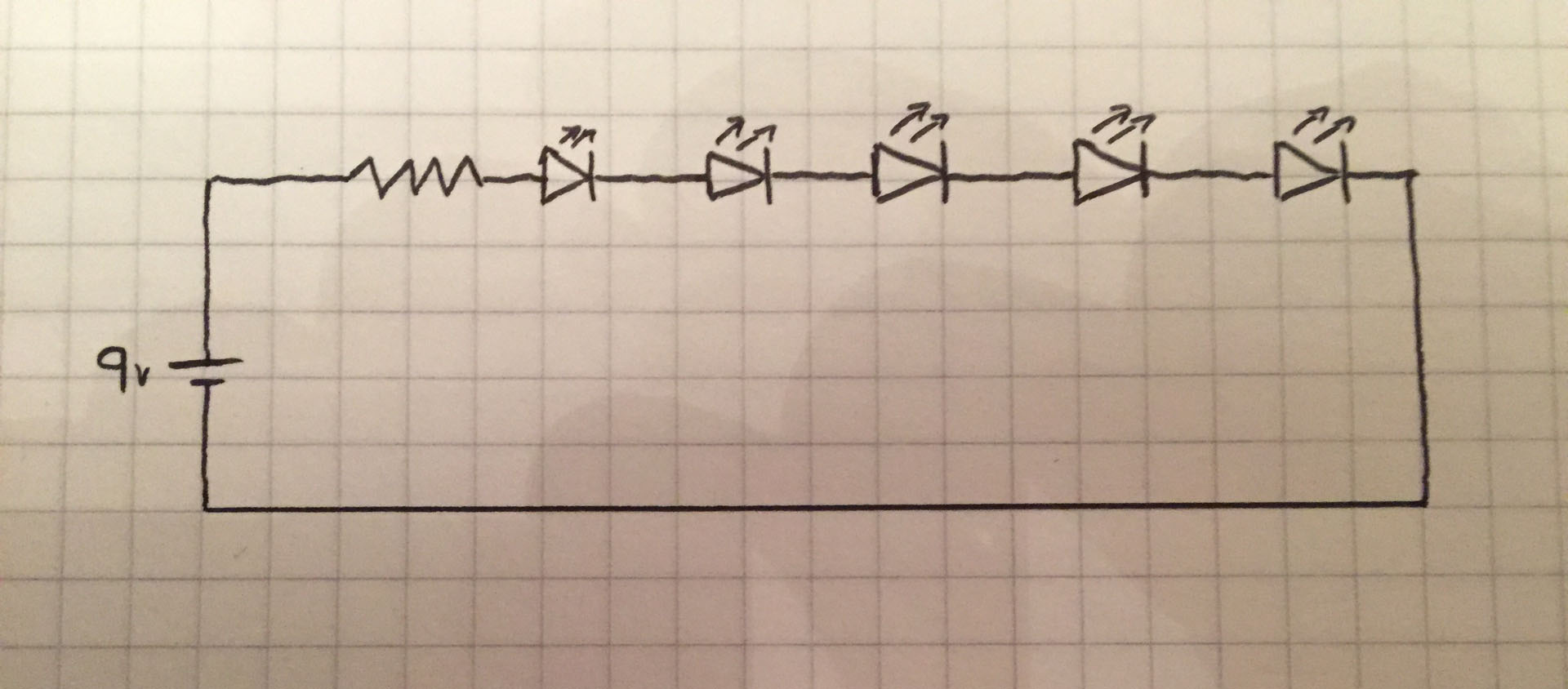As a preface I am just a hobby electronics enthusiast and not an electrical engineering student, and I am just starting out at that, so these may be obvious answers for even a first year student.
As I understand it a basic LED has a forward voltage that it will "consume" from the voltage across a circuit (I am not sure for the correct term for this), so when you calculate the current-limiting resistor value required to protect the LED, only consider the voltage across the resistor, which in a battery-resistor-LED series circuit is the voltage in minus the forward voltage of the LED.
So an LED with a forward voltage of 2V connected in series to a 9V battery will require a current-limiting resistor to drop 7V.
If multiple resistor-LEDs are connected to the battery in parallel, the voltage is the same across each "junction."
So the voltage at points A, B, C, D and E should all be 9V? Therefore again each resistor is dropping 7V and each LED 2V.
My question is, what would happen if 5 LEDs were connected in series? I think we can use one resistor as the current in a series circuit should be the same at all points, but if we used a 9V battery and each LED had a forward voltage of 2V, what happens with 5 in series?
As the voltage drops in total are more than the voltage provided by the battery, would each LED drop one fifth of the 9 volts in (all else being equal)? As the voltage in minus the voltage out must equal zero, this is my guess as to what would happen, and that if that voltage was below the "operating forward voltage" of each LED then they just wouldn't light?
I know that if they were resistors then each one would have a voltage drop proportional to its resistance to the total resistance in the series circuit, but as LEDs aren't resistors presumably they wouldn't necessarily behave as such? The textbooks I have read don't tell you you need to "calculate" the forward voltage of the LEDs, you just go by the component datasheet.
Apologies if my questions are a bit all over the place, I am just trying to understand what is going on here.





